Antlers are a feature unique to deer, no other group of animals have them. Some like antelope and cows may appear to have similar features but they in actual fact have horns.
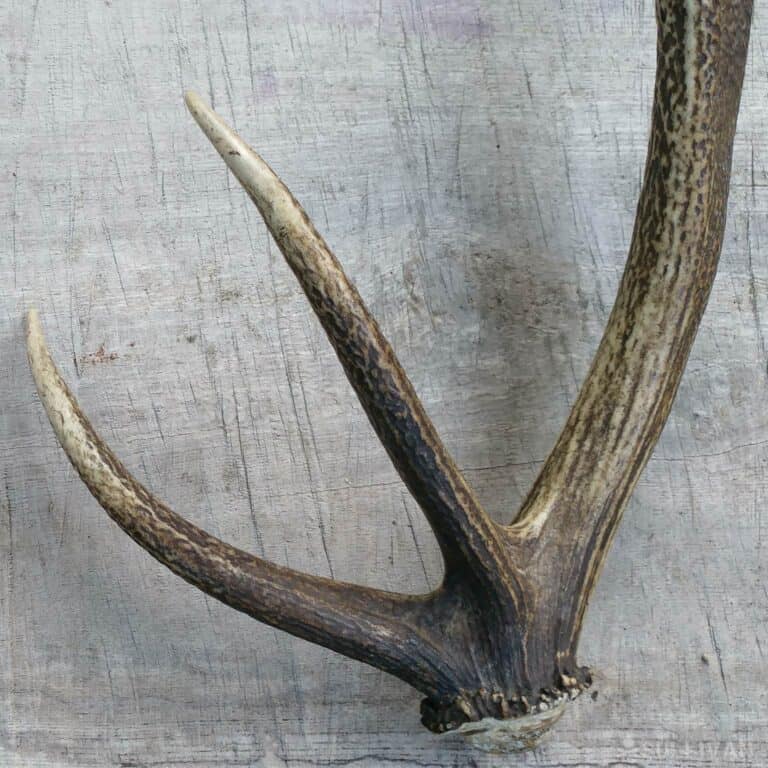
Horns differ from antlers in several ways. Horns are made of keratin, the same material that makes up your hair and fingernails, and grow throughout the life of an animal, they also tend to grow in very simple shapes such as single spikes, curls or spirals.
In contrast deer grow antlers which form a variety of complex shapes like the antlers of Fallow Deer, or the branched, multi pointed antlers of red or sika deer, or the antlers with backward pointing beams almost as long as the main beam of the antler of Pere-David’s deer.
These antlers are made of bone rather than keratin like horns and rather than growing throughout an animal’s life they grow, drop off and regrow every year.
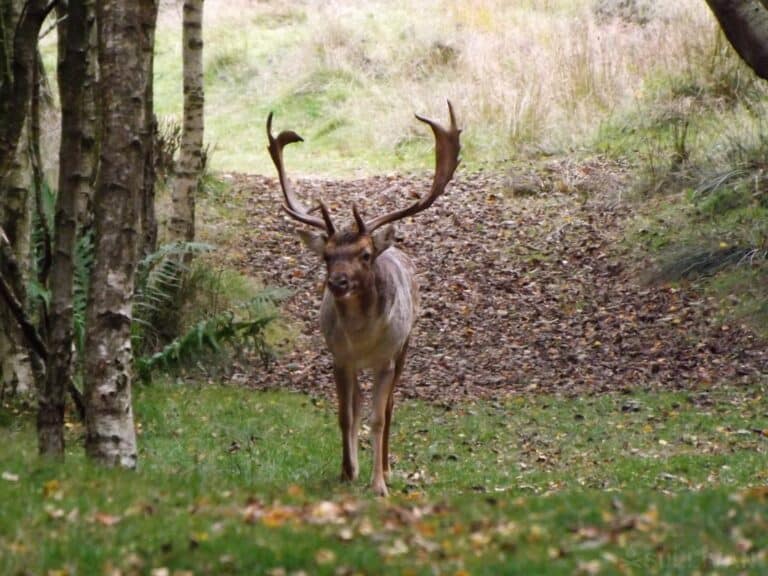
Depending on the species male deer spend about four months each year growing antlers, there are a few exceptions to this rule, female reindeer for example grow antlers as well as the males and Chinese water deer and musk deer have no antlers at all.
Male deer are variously known as stags, bucks, or bulls depending on the species. In general, in the USA male deer are known as bucks, although male moose, elk, and caribou are referred to as bulls.
In the UK, male red and sika deer are known as stags, and the females as hinds, the other four deer species found in the UK; roe, muntjac, fallow, and Chinese water deer are known as bucks and does.
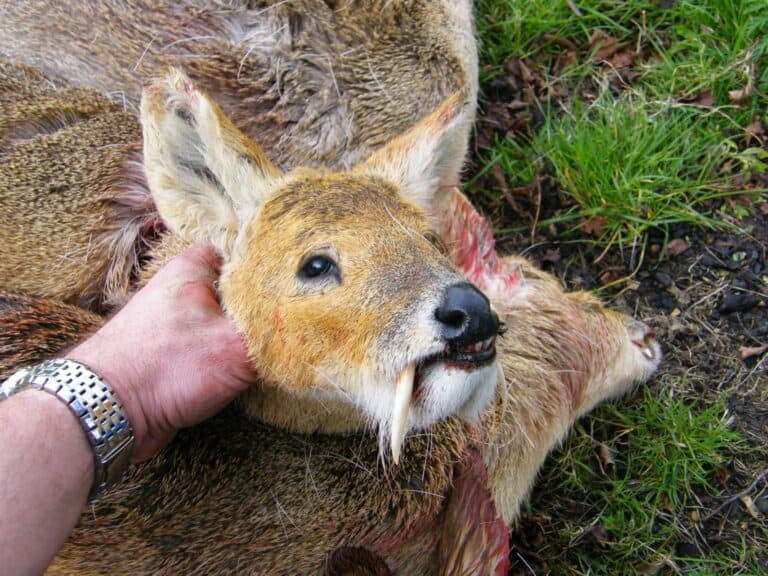
While antlers are growing, they form inside a coating of velvet-like material which contains the nerves and blood supply that feeds the growing antler.
This velvet is quite fragile, and if it becomes damaged or if a wound on the velvet becomes infected or infested with maggots there will be a corresponding malformation of the antlers. You will not see male deer fighting while they are in velvet, as they will try to protect their growing antlers.
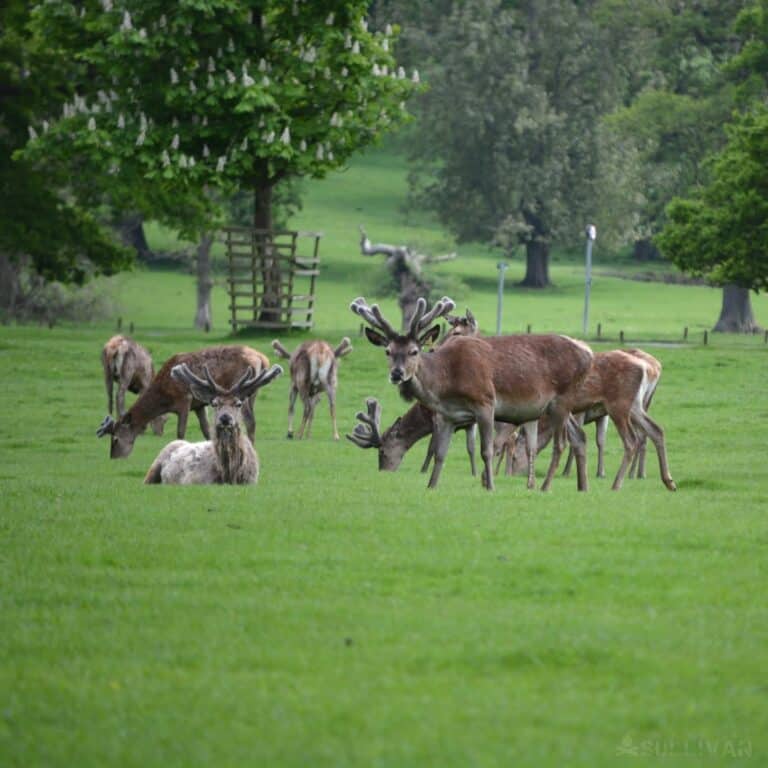
Antler growth is controlled by the hormone testosterone, its release into the male deer’s system is triggered by the days getting shorter as we head into winter.
You can even see regional and local variations in antler coloration due to the material that the deer color their antlers on. From a trophy perspective, color is something considered when scoring and grading trophies so well colored antlers are highly prized.
Velvet is used by some oriental cultures as a medicine and health supplement. To harvest this velvet the antlers need to be removed from the deer before they are fully formed and the velvet had begun to dry out and the bone of the antler began to ossify.
This is often carried out on deer farms in New Zealand where sometimes the sale of velvet is more profitable than the sale of venison. Antlers need to be removed from farmed deer anyway so that the deer can be safely handled to avoid injury to the farmers.
In the UK however, removal of velvet antler is considered an amputation and is prohibited, instead the farmers must wait until the deer is in hard antler to remove them.
This does mean that the deer are nearer to the ‘rut’ the breeding season and can be quite aggressive during the process of de-antlering. It does mean though that this hard antler can be used for a number of primitive technology projects or modern crafts.
Once antlers have fully formed and the velvet is shed they will be solid, ossified bone and will be used for fighting and competing with other male deer, known as stags or bucks. After a few months these antlers will drop off as the new antlers begin to grow.
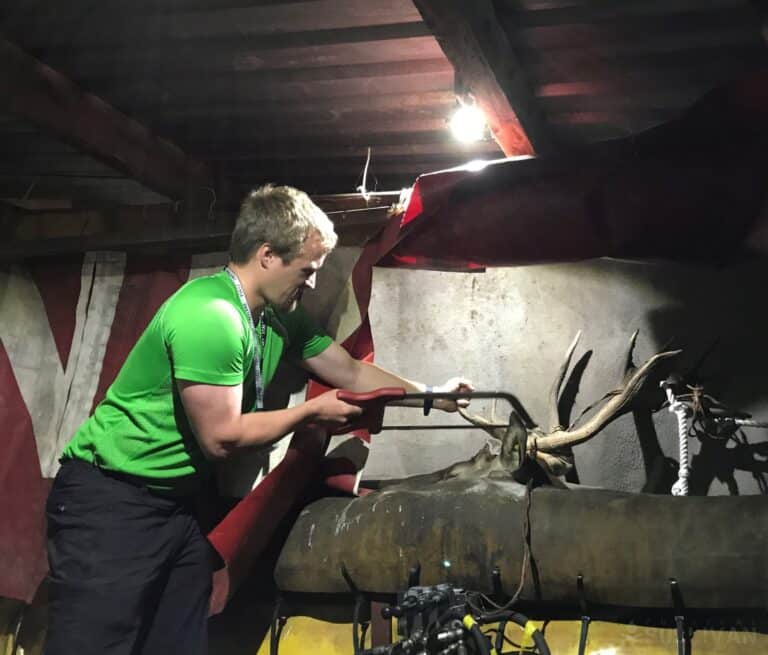
While deer antlers are a marvel in their own right, they have a multitude of other uses. If you come across a shed antler on your hike here are the best ways to make use of them.
Using Antlers for Survival
As well as the traditional eastern medicinal uses for velvet antler there are countless other uses for it, from Stone Age weapons and tools to buttons and fasteners and the handles of high end modern knives.
Do bear in mind though that antler is very tough and strong and will require a lot of patience to work and shape it if you are using primitive tools.
Even with modern power tools, working with antlers can be very time-consuming and frustrating. You should wear a dust mask if you are shaping the antler with power tools such as belt sanders as the dust can become quite irritating.
Antlers can be collected from the ground where it is cast by deer and the best places to look for it is where there is plenty of deer activity and where you can use your tracking skills to identify where deer regularly jump over a wall, ditch or other obstruction.
As the time nears where they will cast their antlers often the shock of landing after a jump over an obstacle is enough to shake the antlers loose and cause them to fall.
They won’t be easy to find though as they will blend in and will quite quickly be eaten by deer and rodents.
Even though it seems strange that a material as hard as an antler can be eaten you would be surprised at just how quickly it disappears.
You can also harvest antlers from your primitive hunting efforts, although it might be a wrench to cut up a particularly nice set of antlers from a recent hunting kill. There is much more to antlers than just a trophy for your wall.
Antlers would have been used as they were with little shaping or adjustment and can still be very useful tools when used whole, for prising shellfish such as limpets off of rocks, as an improvised digging tool or as a vicious weapon.
However, they can be very heavy, and cutting them up and refining them into purpose-made tools not only saves weight but can give you a startling variety of different tools and instruments.
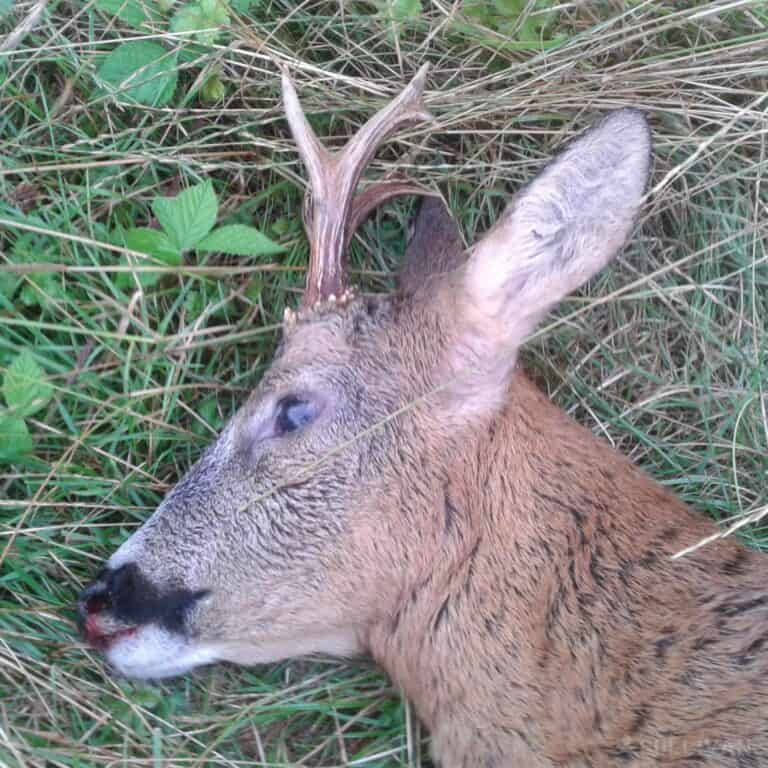
Using Antlers As Primitive Tools
Since antlers are extremely hard and resilient to wear and tear, they make excellent tools for things such as flint knapping or even gardening. Any situation where you need something blunt and durable is an ideal time to use an antler.
Pressure flakers for flint knapping
The tips of antler tines are the perfect tool for pressure flaking flint, either to retouch a broken edge or add strength to a tool like an arrowhead or spear point.
The tips of red deer antlers are a perfect size to hold in your hand; the natural curve allows you to apply pressure without causing any discomfort.
Soft Hammer for Flint knapping
A soft hammer is made from the beam and crown section of a large antler such as red deer or moose and is the perfect tool for ‘spalling’ flint to strike off smaller workable sections or quickly knapp a larger piece down to size.
The bulk and uneven surfaces of the crown can be ground down against a rock to give a smooth striking surface and any tines can be removed to give you a smooth, comfortable surface to hold.
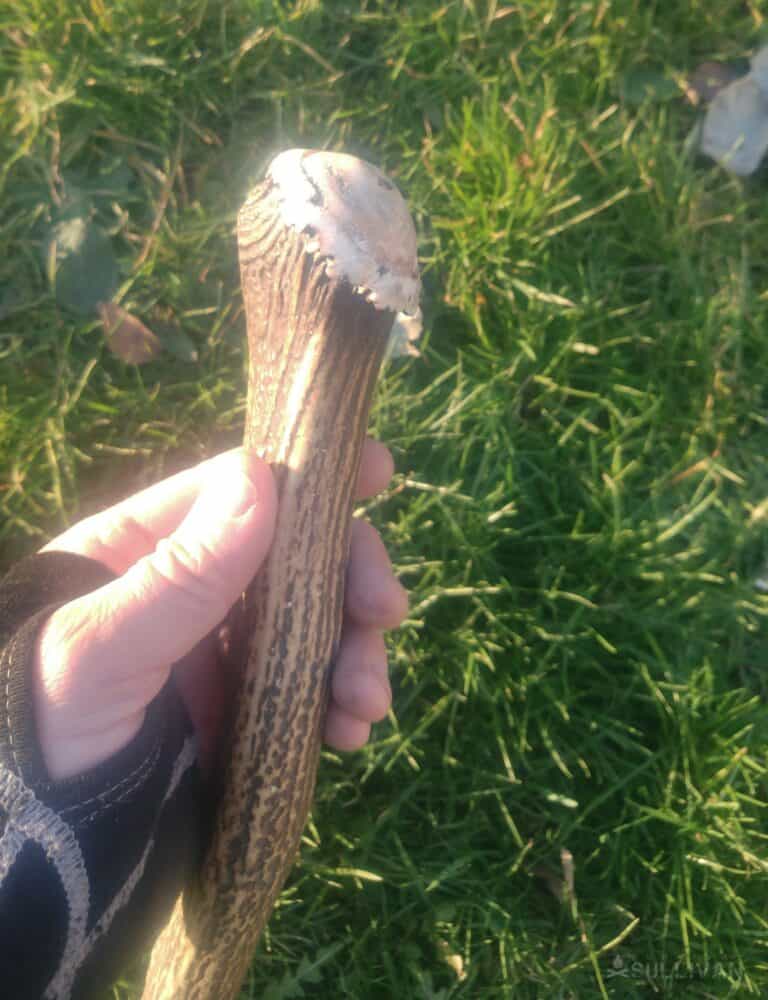
Used As A Shovel For Digging
It is clear from the shape of larger antlers that they would make excellent diffing tools, either used whole or with some of the lower tines removed.
Even without the spade or palm shape of a fallow or moose antler the sharp tips of an antler would be fantastic for digging.
Most First Nation peoples who dig roots for food favor a digging stick for excavating roots and other edibles as the precision of a pointed digging tool instead of a spade or shovel allows them to carefully excavate roots and tubers without damaging them.
An antler would give you increased durability over a wooden digging stick, but given that it is such a valuable material for making tools it may be better used for other things where its strength is vital.
Improvised Weapons
As it turns out, antlers are truly impressive weapons for the deer that wield them, and they can be impressive for us too if we repurpose them. And no, not talking about strapping them to your head or helmet like some sort of wild man!
Ancient and primitive cultures from around the world repurposed antlers as weapons in the form of handheld spikes or spikes that could be added to clubs and other weapons, either singly or in multiples.
Antlers are of course designed to pierce and puncture, a task they excel at and they can stand up to multiple, hard blows. If you want, you can also sharpen an antler to a really acute point!
A little bit of time fashioning in the antlers for handheld use or attaching them to the end of a club could produce a ferocious tool for hunting or self-defense.
Arrow, Harpoon, and Spear Heads
Bone can be sharpened up to a very strong point or even to an almost razor edge and would have been a prized material of our ancient ancestors for the manufacture of harpoon points that would have been too fragile had they been made out of stone.
The strength and density of antler particularly as the solid bone is often thicker in antler than in other bones gives a lot of material to work with and to carve barbs and other features of harpoon points out of that smaller bones would not always have been ideal for.
These barbed harpoon points can be made very long and still retain strength when you use antlers and are vastly superior to other materials such as wood and stone.
Long stone points are very fragile and time-consuming to make and would have been too precious and fragile to use for them to be truly useful for catching fish, seals, and other marine mammals.
Trap Making
As I said above, antlers are remarkably durable and capable weapons, and even if you don’t want to use them directly for the purpose they can still be a valuable resource for the making of traps.
You can use antlers directly in a trap as a component that can impale or snag a target, or cut them down and whittle them into toggles and other trap components that can let you create better, more sophisticated, and more effective traps of any sort.
Antlers have a unique and almost perfect material characteristic that makes them well-suited for use in all kinds of traps…
You can make a whip trap even more vicious and deadly with antlers crowning the end of the branch, create a deadfall that will easily hold even large prey in place, or just construct a delicate and sensitive snare for small game using toggles made from antler. The possibilities are endless!
Make Your Own Muzzleloader Ramrod Handle
While this isn’t something that can necessarily be done out in the wilderness you can use a deer antler to make primitive ramrod handles for your muzzleloader.
One of the biggest gripes about pushing a load down into a rifle is the pain it causes your hand as you manipulate the ramrod.
Whittle down an antler using a grinder or angle grinder and drill a hole through the middle of your antler.
This will then fit over your ramrod and it’ll be small enough to pack with you. The antler provides extra length and saves your poor hand from injury.
Decorative Carving
As well as practical uses for antler they can be used for decorative and artistic carving. The cast crowns of farmed deer antler are often used for carving as they are solid bone and do not have any of the honeycomb center that is present further up the beam of the antler.
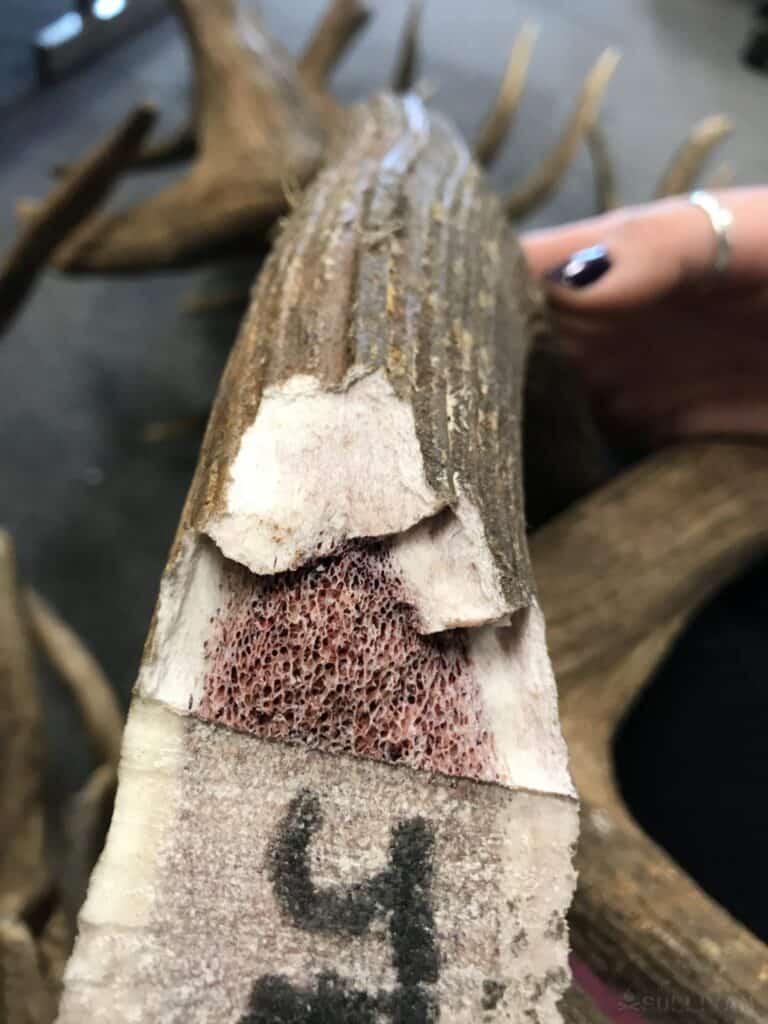
Antlers are incredibly strong and hard that carving can be very difficult and can be made much faster and more efficiently by using modern tools such as dremels.
Gouging and scoring with stone tools would have been an incredibly time-consuming way to work the antler although it can be weakened with heat by directly applying hot coals from your fire you can weaken the antler and break sections off.
Knife Handles
A prized material for ancient as well as modern knife makers, antler is nonporous, dense and extremely hard wearing not to mention very attractive when used as a knife handle.
Due to the honeycomb structure at the center of antlers they can be easily drilled out to fit a handle with a narrow or ‘rat tail’ tang and are very popular for Scandinavian-style knives where disks of antler can be mixed with wood, leather, birch bark, and other materials to produce very attractive patterns.
Alternatively, whole sections of antler can be used to produce a one piece handle such as the original knife of George Washington ‘Nessmuk’ Sears as illustrated in his famous 1884 book Woodcraft and Camping. Or like in the Silver Stage Bowie Knife.
Bearing Blocks For A Bowdrill Kit
The bearing block has to be one of the hardest pieces of a bow drill kit since it is where your hand puts the incredible pressure required to create friction at the bottom of the bow drill on the hearth board.
Deer antler is incredible for this as it is made of bone, incredibly tough, and can be manufactured in a way that it fits in your hand nicely.
If you have a piece of deer antler instead of the normal green wood, use that as it can’t get rotted out by water and will take a lot of friction before it breaks.
Buttons and Fasteners
One of the simplest projects to undertake with antler, simple slices of antler cross-section can be used as excellent buttons and fasteners and the tips of tines make excellent toggle fasteners or duffle buttons.
Be aware though that larger section antler is often hollow in the center and may not be strong enough to bore two holes for making traditional pattern buttons.
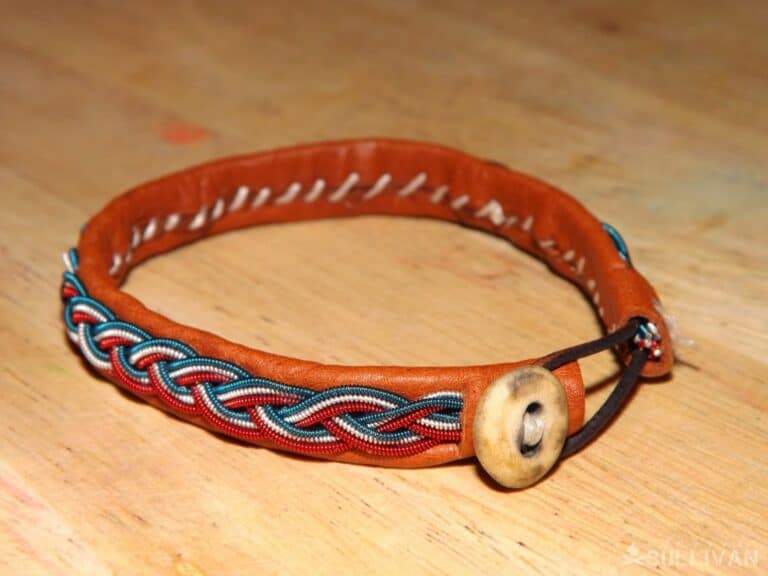
Instead, consider using the side wall of an antler and cutting it to shape as well as avoiding the weaker central portion of the round antler you can retain the character of the colored and textured outer portion of the antler.
Reindeer antler tends to be more solid than that of other species which makes them particularly useful for craft projects as do roe deer antler.
However, due to their small size, they are not always useful for some of the larger tools and crafts that antler can be used for so they are a good option for making smaller buttons and fasteners.
Pen Barrel
Antlers can make a wonderful pen barrel, and not just because of their alluring texture and color when they are ground and polished.
Antlers, as stated above, are hollow, and finding a tine of the right length and the right diameter can give you a purpose-made pen barrel that is easily fitted with a nib and other mechanisms. Pretty soon, you’ll have a handsome, functional, and one-of-a-kind pen!
This really is one of my very favorite crafting uses for antlers, and I’ve even started giving them as gifts after I received one from a clever friend some years back. I always love seeing the look of surprise on the recipient’s face when I tell them what the body of the pen is made of.
Game Pieces
Another ancient use for antler, and one that is indefinably pleasurable, is sculpting it into game pieces.
You can do something really simple and make simple tokens for backgammon or checkers for, well, checkers, or if you really want to up your hobby skills you can sculpt a set of antlers into a set of chess pieces.
This, as you might imagine, is a pretty intricate and time-consuming undertaking but I believe it is one that is well worth the effort.
Aside from being durable and functional antlers also have the advantage of being dyed, smoked, or colored in other practical ways so you can tell which is which when you and a friend settle down to a game.
Truly, this is one of the most interesting uses for antlers even if it isn’t that serious, and I know that a custom-made chessboard and accompanying sets of pieces made from antler will be an heirloom that your kids and grandkids will fight over once you are gone.
Rings and Beads
Antlers have always held a cultural and decorative significance for various societies around the world, and one of the most elegant and subtle ways that they are used for embellishment is in the form of rings and beads.
Once again we see the hollow nature of antlers making them picture-perfect for reshaping into a ring, and with a little bit of planning and investigation, you can find a section that will fit one of your fingers perfectly just as it is, meaning you only need to shape and finish the outside to produce a bespoke ring.
Likewise, antlers great and small can easily be fashioned into beads of varying shapes and easily strung onto cordage. The result is a rustic but really handsome necklace suitable for casual or ceremonial use.
Walking Stick Topper
Pretty much everyone knows that a good walking stick is invaluable whenever you’re going into the woods, whether it be for recreation or survival.
But, just because a walking stick is entirely practical doesn’t mean you can’t express yourself! And what better way to express yourself than to top your walking stick with a custom deer antler topper?
This is a great way to show off your skills at engraving or just to let people know what you are all about. All sorts of carved motifs, shapes, animals, and icons are possible with antler if you have the skill, and you can trust that your creation will still hold up even under the rigors of hiking because antler is so tough.
Using Antlers As A Source Of Food
You’d never really think to use antlers as a source of food but people have done it since before modern commodities were available. Here’s a heads-up on how to use antlers as a source of nutrition in your home.
Making Gelatin
Not just for using as tools, antlers can become a source of food as well. Gelatin works as a thickening agent for many recipes and can be used medicinally as well. In fact, antlers have been used in traditional medicine for thousands of years.
Simply grind the antler into a powder, boiling it until the gelatin separates, and then straining it for preservation. Great for using to make jam from any fresh berries you harvest.
Baking
Turns out that grinding up shed antlers can give you a powder that acts much like baking powder. If you go back into the history books you’ll even notice that some of the current recipes even call for it.
Interestingly enough, the ground anter releases ammonium bicarbonate as a gas and that acts as a leavening agent for whatever you’re baking.
Dog Treats
Instead of giving your dogs rawhide or sticks to chew, try giving them a shed antler as a treat.
Not only are they rock hard which is great for cleaning your dog’s teeth, they have an appealing game-ness to them that keeps the dog occupied.
Since antlers are full of calcium your dog will be able to take full advantage of this mineral supplement. Hunters love to give their dogs antlers after a long day of antler hunting as a sort of reward.
Primitive Home Accessories
One of the main reasons for shed hunting is the value that they provide to society. Collectors and traders are always looking for deer antlers and they have a range of versatility for both modern and primitive homes.
Clothing Hangers
If you’re into building primitive shelters and are stuck in a location for an extended period of time you will still need somewhere to hang your coat or clothing.
Using the points in the antler gives you a variety of hooks to hang various clothing and other items.
Primitive Candle Holder And Chandelier
Even primitive homes need some way to cast light. This can be done with homemade candles or even solar rechargeable lights.
A deer antler can provide a means to hold up a source of light using the curvature of the antlers. Additionally, you can use it as a way to store the antlers until you can use them for something else.
Furniture
Believe it or not, antler can also be used to make light-duty furniture that will look amazing at home, in your cabin, or elsewhere on the homestead.
From end tables and coffee tables to chandeliers and even as more substantial components on chairs or even tables, with some skill, fasteners, and a good design you can incorporate antlers into any furniture you might be crafting, or even make the furniture entirely out of antlers if you have a large supply.
Carve Out A Primitive Spoon Or Other Utensils
We all need utensils to eat with and the easiest one to make is a spoon. Antlers are tough but they are able to be carved down into a sloping spoon-like structure.
This is a multi-purpose tool that can be used to eat with, cook with, and even act like a small shove if you need it.
While a spoon is probably the easiest utensil to make with antler, you can also carve it out into a fork-like shape that will make it easy to eat meat and other food from the fire.
Final Thoughts
Antlers are one of the most versatile natural materials available to us.
You just have to look at a caribou using their antlers as a shovel to get at the reindeer moss beneath deep snow and Mesolithic artifacts to see that using antlers as tools is by no means a new phenomenon.
While you can use the velvet from a deer antler to create a lot of medicinal remedies the antler itself provides a physically secure way of creating tools and food for longer-term situations.
Consider it a blessing to stumble upon a shed deer antler, especially if you’re in a survival situation.
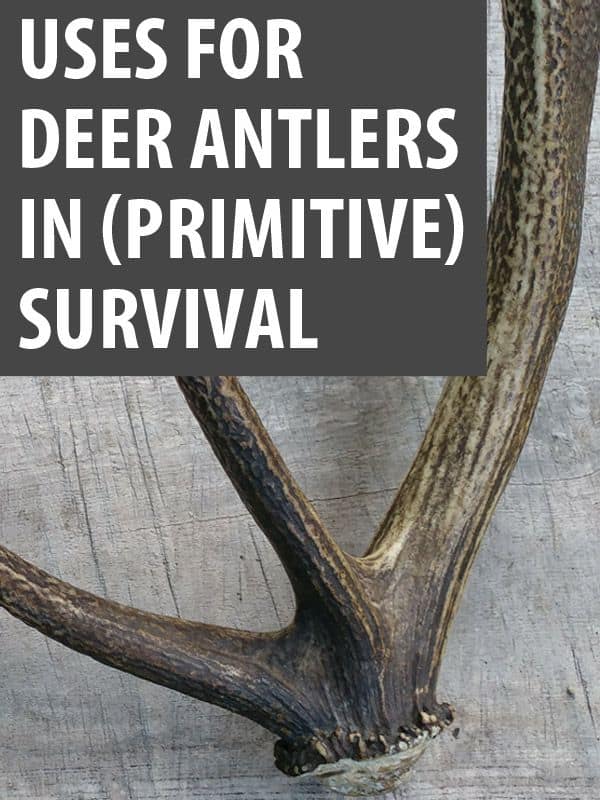
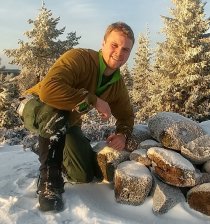
Geoff is a lecturer at Hartpury College. He has been teaching at colleges for eight years and in that time has worked at some of the most prestigious land based colleges in Britain. He trained as a professional hunter and game keeper and as well as his teaching job he still manages deer professionally as a deer stalker, carrying out culls, guiding clients and advising on deer management strategy.
He has operated his own bushcraft and survival skills training companies since 2010 and has also managed outdoor and environmental education centers in Norfolk and Scotland over the course of his career. A keen traveler, Geoff has honed his survival skills in New Zealand and Scandinavia, he speaks fluent Swedish and has proven his bushcraft ability on many expeditions.
Several of these expeditions were on long distance trails in the UK to raise money for Whizz Kidz a charity that supports disabled children, Geoff has hiked over 2000 miles in aid of this charity.

Put me in the “contrarian” category for this one. Buttons? Probably these already exist by the trillions, and the 100-year-old types I’ve seen seem as sturdy as they ever were. IMO we’ll run out of lots of things before a button shortage shows up.
Flint tools? There must be hundreds of billions of them. Many are made of rust-resistant metals, and will endure for a very long time. Millions of tons of steel exist in the US in many forms, and blacksmiths would be using existing stocks for centuries. Again an opinion, but I think I’d prefer a poor iron ax to a very good flint model.
Arrow, Harpoon and Spear Heads: An awful lot of the clad US coins are around. I’d expect they could be quickly hammered into much better arrowheads than flint ones. Spears could be made in volume from cast aluminum or iron.
Flint tools: I seem to have missed a self-edit error – originally wrote there were billions of knives in the US.